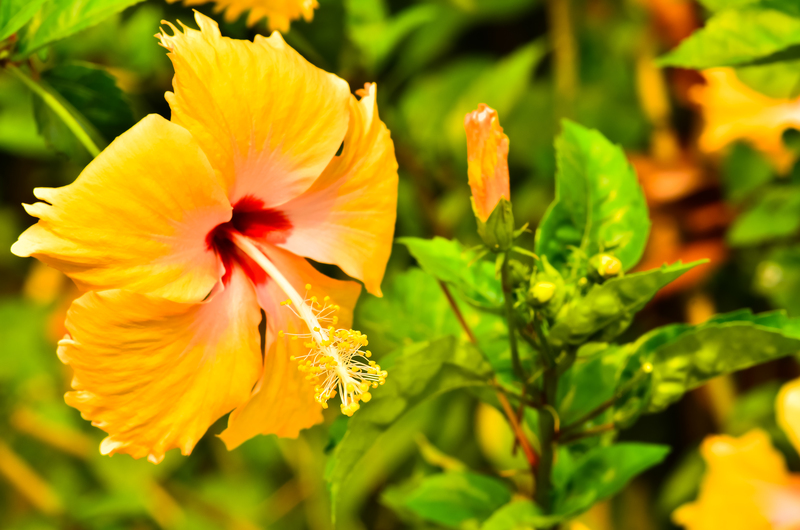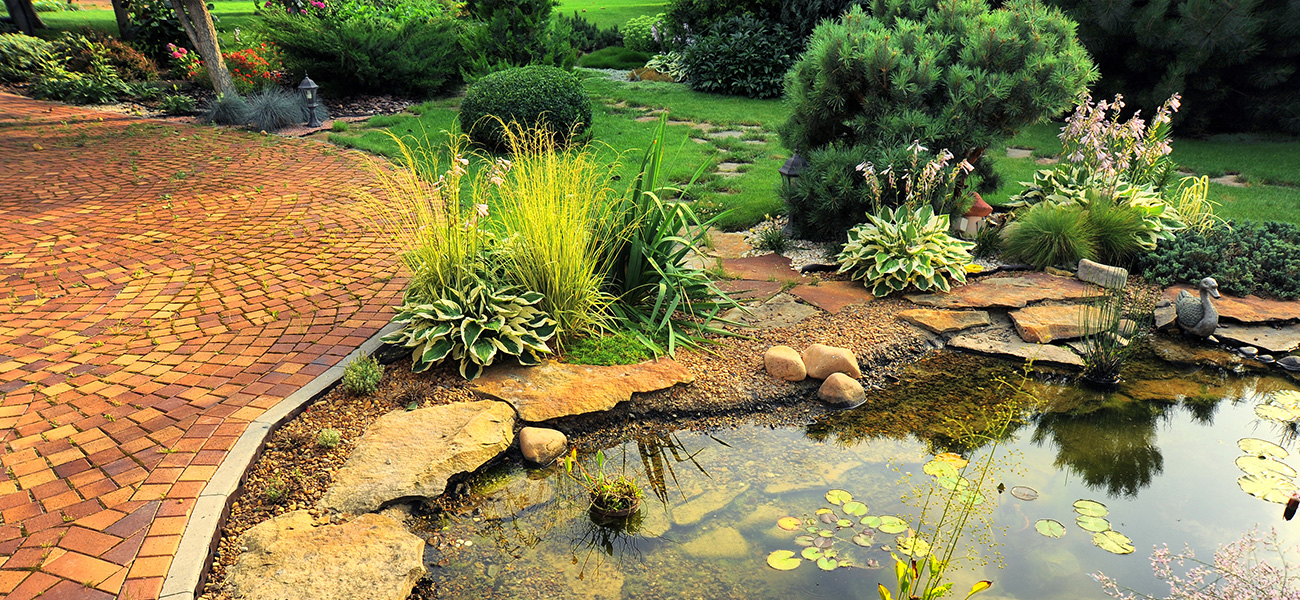Learn to cultivate a vibrant and diverse herb garden
Posted on 31/05/2025
Learn to Cultivate a Vibrant and Diverse Herb Garden: The Ultimate Guide
Diving into the world of herb gardening is a rewarding journey filled with aromatic pleasures, culinary delights, and a touch of visual magic. Whether you're a seasoned green thumb or an enthusiastic beginner, this comprehensive guide will show you how to cultivate a vibrant and diverse herb garden right at home. Discover practical tips, expert advice, and creative ideas to build a flourishing oasis bursting with fresh flavors, fragrances, and natural beauty.

Why Cultivating a Diverse Herb Garden is Worthwhile
A diverse herb garden brings more than just aesthetic charm--it's a sustainable, practical, and pleasurable addition to any outdoor or indoor space. Here's why you should embrace diversity and vibrancy in your herb plot:
- Flavorful Variety: Enjoy fresh, aromatic herbs year-round for cooking, teas, and garnishes.
- Health Benefits: Many herbs offer medicinal and nutritional properties, aiding digestion and boosting immunity.
- Pollinator Attraction: Diversity attracts bees, butterflies, and other beneficial insects, supporting ecological balance.
- Pest Control: Some herbs naturally repel harmful pests, reducing your reliance on chemicals.
- Sensory Delight: A vibrant herb garden enriches your senses with colors, scents, and flavors.
- Low Maintenance: Most herbs are hardy, drought-tolerant, and thrive with minimal care.
Planning Your Vibrant Herb Garden
Strategic planning is the key to cultivating a flourishing herb garden. Before you dig in the soil, consider space, light, climate, and your preferred herb varieties.
Choose the Perfect Location
- Sunlight: Most herbs demand at least 6 hours of direct sunlight daily. Opt for a south-facing spot if possible.
- Soil: Well-draining soil is crucial. Amend with compost or sand as needed, as soggy soils rot roots.
- Accessibility: Plant near your kitchen or patio for easy harvesting all year round.
- Protection: Select a site shielded from strong winds and heavy foot traffic to prevent damage.
Designing for Diversity and Beauty
- Raised Beds or Containers: Great for limited spaces and offer better control over soil conditions.
- Themed Sections: Organize herbs by culinary use, color, or growth habits such as Mediterranean herbs, medicinal varieties, or whimsical pollinator patches.
- Interplanting: Combine tall, spreading, and compact herbs to maximize space and create visual interest.
Choosing the Best Herbs for a Vibrant and Diverse Garden
Selecting a range of herbs ensures year-round harvest and a lively, bustling garden habitat. Here are some top picks for a diverse herb garden:
Classic Culinary Herbs
- Basil: Sweet, spicy leaves perfect for pesto, salads, and Italian cuisine.
- Parsley: Versatile and rich in vitamins, thriving as both curly and flat-leaf types.
- Rosemary: Woody and aromatic, excellent for roasting and Mediterranean dishes.
- Thyme: Low-growing with earthy undertones, ideal for soups and stews.
- Oregano: A pizza night staple with strong, robust flavor.
- Dill: Feathery leaves and seeds marvelous for pickles, fish, and bread.
Less-Common Culinary Herbs
- Tarragon: Anise-like notes, a must for French-inspired cooking.
- Chervil: Mild and delicate, enhancing sauces and egg dishes.
- Sorrel: Tart, lemony flavor perfect for salads and soups.
Medicinal and Fragrant Herbs
- Lemon Balm: Uplifting citrus scent, ideal for teas and calming remedies.
- Lavender: Iconic purple blooms for crafts, baking, and aromatherapy.
- Mint: Vigorous grower--use in teas, desserts, and as a natural pest deterrent.
- Sage: Silvery foliage and savory taste, crucial for stuffings and wellness tonics.
Pollinator & Companion Herbs
- Borage: Blue flowers attract bees, edible for salads and drinks.
- Chives: Oniony flavor and pretty lilac blooms that attract pollinators.
- Fennel: Feathery leaves and yellow flowers lure bees and butterflies, plus the seeds enhance seasoning blends.
*Tip: Embrace native and unusual herbs to truly diversify your garden and support local wildlife.
How to Start Your Herb Garden: Seeds vs. Transplants
Herbs can be grown from seeds or starter plants (transplants). Each method has its perks:
- Seeds: Affordable and offer the widest selection. They may require more patience as germination and early growth can be slow.
- Transplants: Provide a head start on your growing season. Ideal for beginners seeking quick gratification.
Some herbs (like basil, cilantro, and dill) are best sown directly, as they dislike transplanting. More robust herbs like sage, rosemary, and mint typically thrive when set out as young plants.
Soil Preparation and Planting Techniques
A lush, vibrant herb garden starts beneath the surface. Soil health is paramount for vigorous growth, flavor intensity, and resilience.
Building Better Soil for Herbs
- Loamy Texture: Amend heavy clay or sandy soils with compost to improve texture and nutrient availability.
- Drainage: Elevate beds and add gravel if your soil is prone to waterlogging--herbs despise wet feet!
- pH Balance: Most herbs prefer a neutral to slightly alkaline pH (6.0 to 7.5). Test and adjust as needed.
- Organic Matter: Work in composted manure or leaf mold to feed the soil biology.
Planting Guidelines
- Spacing: Give each species room to mature; overcrowding promotes disease.
- Depth: Sow seeds at recommended depths (usually 2-3 times their diameter). Transplants should sit at the same depth as their pot.
- Water In: After planting, water thoroughly to settle soil and reduce shock.
Care and Maintenance for an Abundant Herb Garden
Herbs are famously forgiving, but thrive with attentive care. Follow these maintenance essentials:
Watering
- Consistency: Water deeply and infrequently to establish strong roots. Most herbs prefer soil that dries slightly between waterings.
- Container Caution: Potted herbs need more frequent attention - check soil daily in hot weather.
Feeding
- Minimal Fertilizers: Overfeeding herbs may dilute their flavor. A biannual top-dressing of compost usually suffices.
- Liquid Feeds: Apply half-strength organic liquid fertilizers if needed during peak growth after harvesting.
Pruning and Harvesting
- Regular Cutting: Frequent snipping promotes bushy, vigorous plants. Remove flower buds early in the season (except those grown for pollinators).
- Don't Strip Bare: Harvest only one-third of a plant at a time to avoid stress.
- Timing: Gather leaves and stems in the morning, when essential oils are most concentrated.
Pest and Disease Management
- Natural Defenses: Most herbs naturally repel many pests, but keep an eye out for aphids, spider mites, or mildew.
- Remedies: Use gentle solutions like insecticidal soap, or encourage beneficial insects by companion planting.
- Rotate Crops: To reduce disease, rotate annual herbs and avoid overcrowded conditions.
Growing Herbs Indoors for Year-Round Harvest
City dwellers and those facing frosty winters can still enjoy a colorful, diverse herb garden indoors. Here's how:
- Containers: Use pots with drainage holes. Group herbs by water needs for convenience.
- Windowsills: South or west-facing windows ensure optimal sunlight.
- Supplemental Lighting: Consider grow lights if natural light is limited (LED full-spectrum bulbs work best).
- Compact Choices: Opt for smaller or dwarf varieties--chives, basil, parsley, thyme, and mint are especially suited for pots.
Creative Ideas for Displaying a Vibrant and Diverse Herb Garden
Unleash your creativity and make your herb garden a true conversation piece by experimenting with displays:
- Vertical Gardens: Hang pots on fences or use wall-mounted planters to save space and add height.
- Herb Spirals: Construct spirals of stones or bricks to maximize edge space and microclimates.
- Pallet Planters: Recycled wooden pallets can be transformed into rustic, upright herb gardens.
- Windowsill Boxes: Perfect for bright kitchens and year-round picking.
- Hanging Baskets: Trailing herbs like oregano and thyme thrive in baskets, cascading beautifully.
Preserving and Enjoying Your Herbal Harvest
A productive herb garden will reward you with more fresh leaves than you can use at once. Here are ways to preserve your colorful, diverse harvest:
- Drying: Bundle and hang herbs upside down in a warm, airy space; store in airtight jars.
- Freezing: Chop and freeze in ice cube trays with water or oil for soup and stew-ready cubes.
- Herbal Vinegars and Oils: Infuse clean, dry herbs in vinegar or oil for custom salad dressings and marinades.
- Herbal Teas: Dry lemon balm, mint, or chamomile for year-round soothing teas.
- Butter and Pestos: Mix finely chopped herbs into butter or blend for freezer-friendly pestos.
Common Challenges (and Solutions) in Herbal Gardening
- Leggy Growth: Usually caused by insufficient light--move plants to a sunnier spot or supplement with grow lights.
- Root Rot: Ensure excellent drainage. Remove affected portions immediately.
- Herbs Bolting Too Early: Sudden heat or overly rich soil triggers premature flowering. Mulch to keep roots cool and avoid excess fertilizing.
- Pests: Encourage predatory insects, use neem oil, or wash off small infestations with water.
- Competition: Some vigorous herbs (like mint or oregano) can crowd others. Confine aggressive types to pots.

Frequently Asked Questions About Herb Gardening
-
Can I grow a diverse herb garden in a small space?
Yes! Use compact varieties, vertical planters, and containers to cultivate a vibrant mix even on balconies or patios. -
What are the most low-maintenance herbs?
Thyme, rosemary, sage, chives, and oregano are drought-tolerant and dependable with minimal care. -
Do herbs need fertilizer?
Rarely. Too much fertilizer reduces aromatic qualities. Compost or occasional diluted liquid feed is usually enough. -
How can I prevent my herbs from taking over?
Grow fast-spreaders in pots or designated sections and harvest generously to keep them in check.
Conclusion: Embrace a World of Flavor, Color, and Wellness
To grow a vibrant and diverse herb garden is to unlock a realm of endless flavor, timeless beauty, and year-round enjoyment. By thoughtfully selecting and caring for a range of herbs--whether in spacious beds, compact containers, or sunny windowsills--you'll reap fresh harvests, support local pollinators, and cultivate an enriching connection with nature.
Start small or dream big--the aromatic, colorful world of herb gardening awaits!
Now is the perfect time to plant the seeds of your vibrant, diverse herb sanctuary. Happy gardening!

